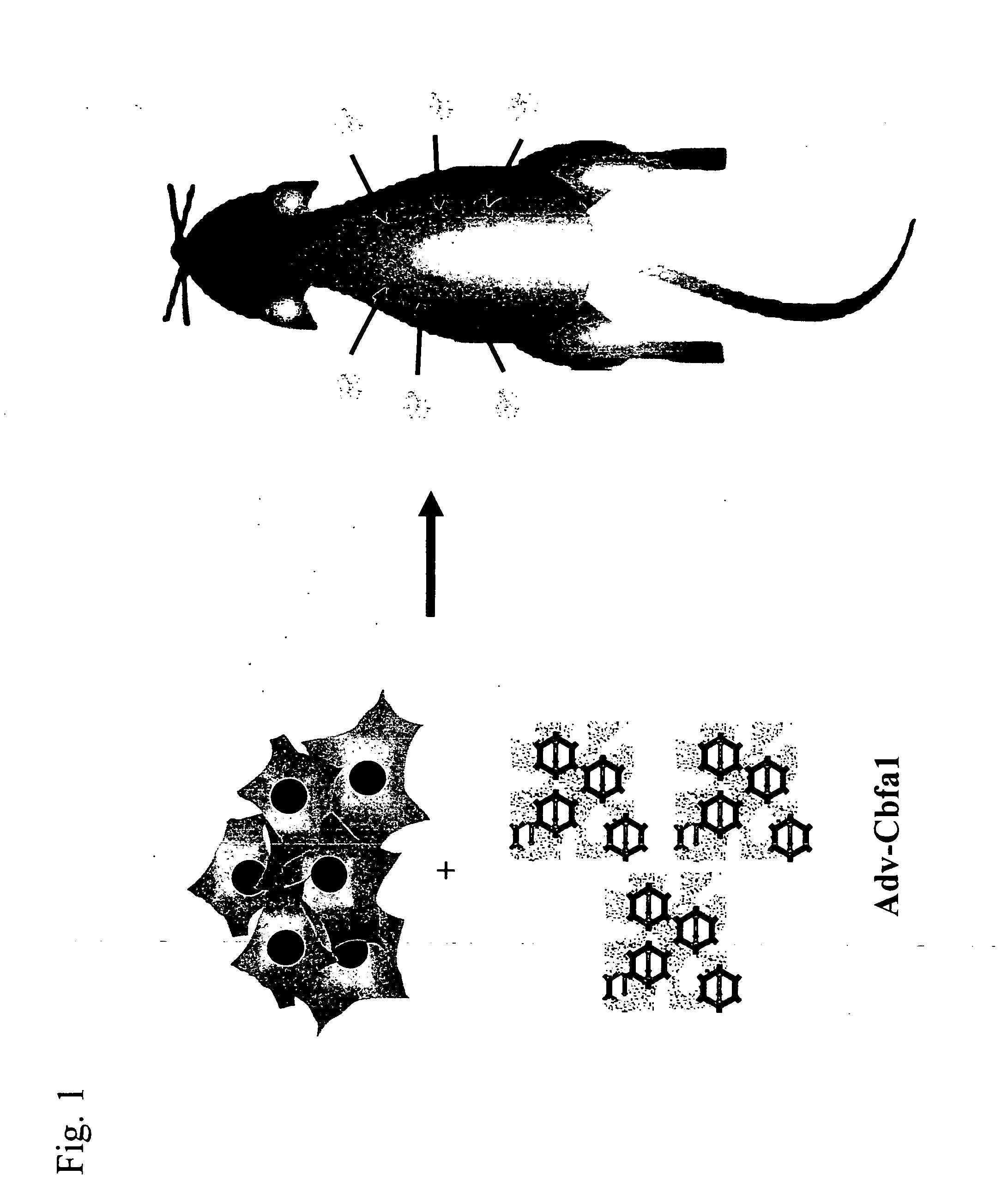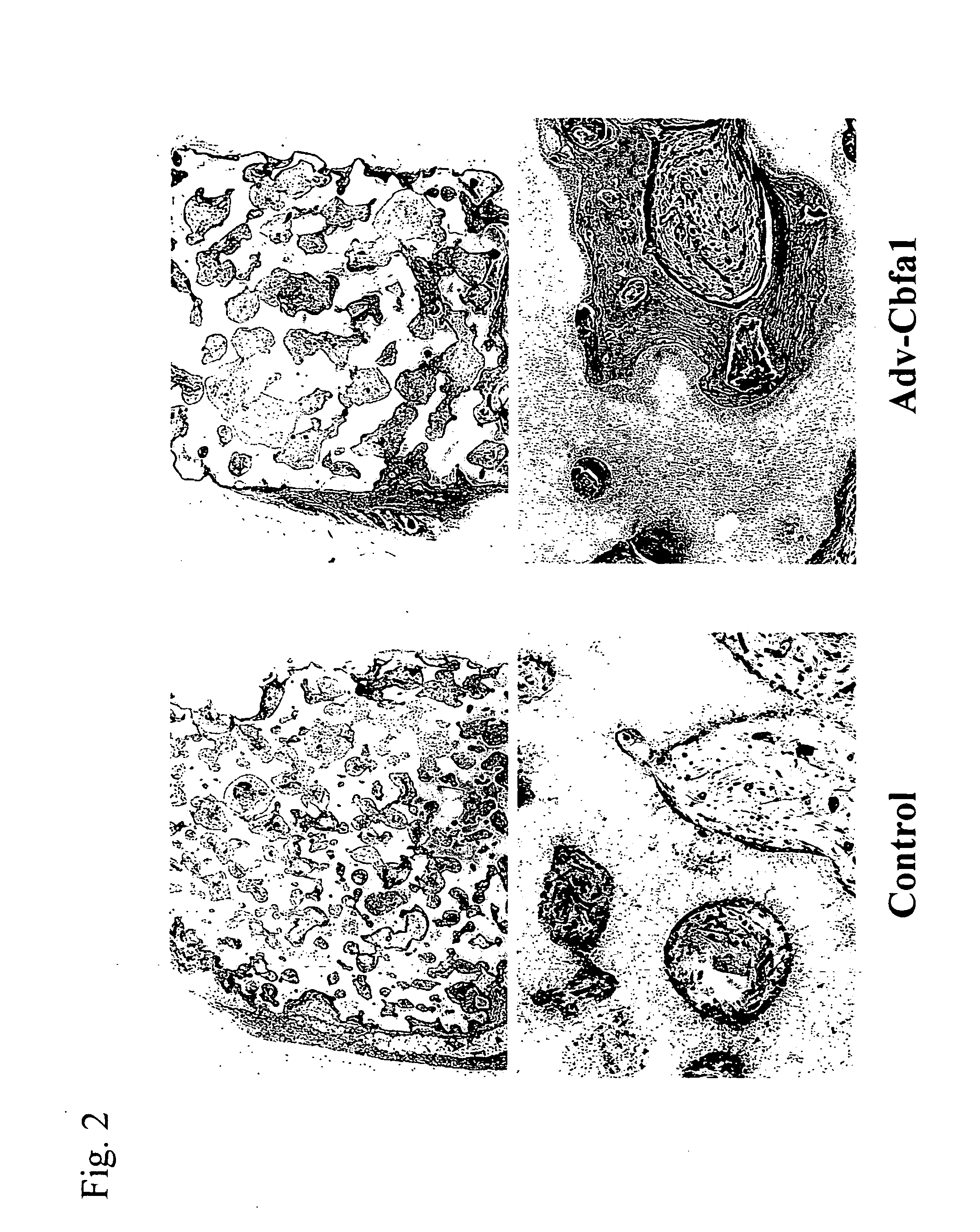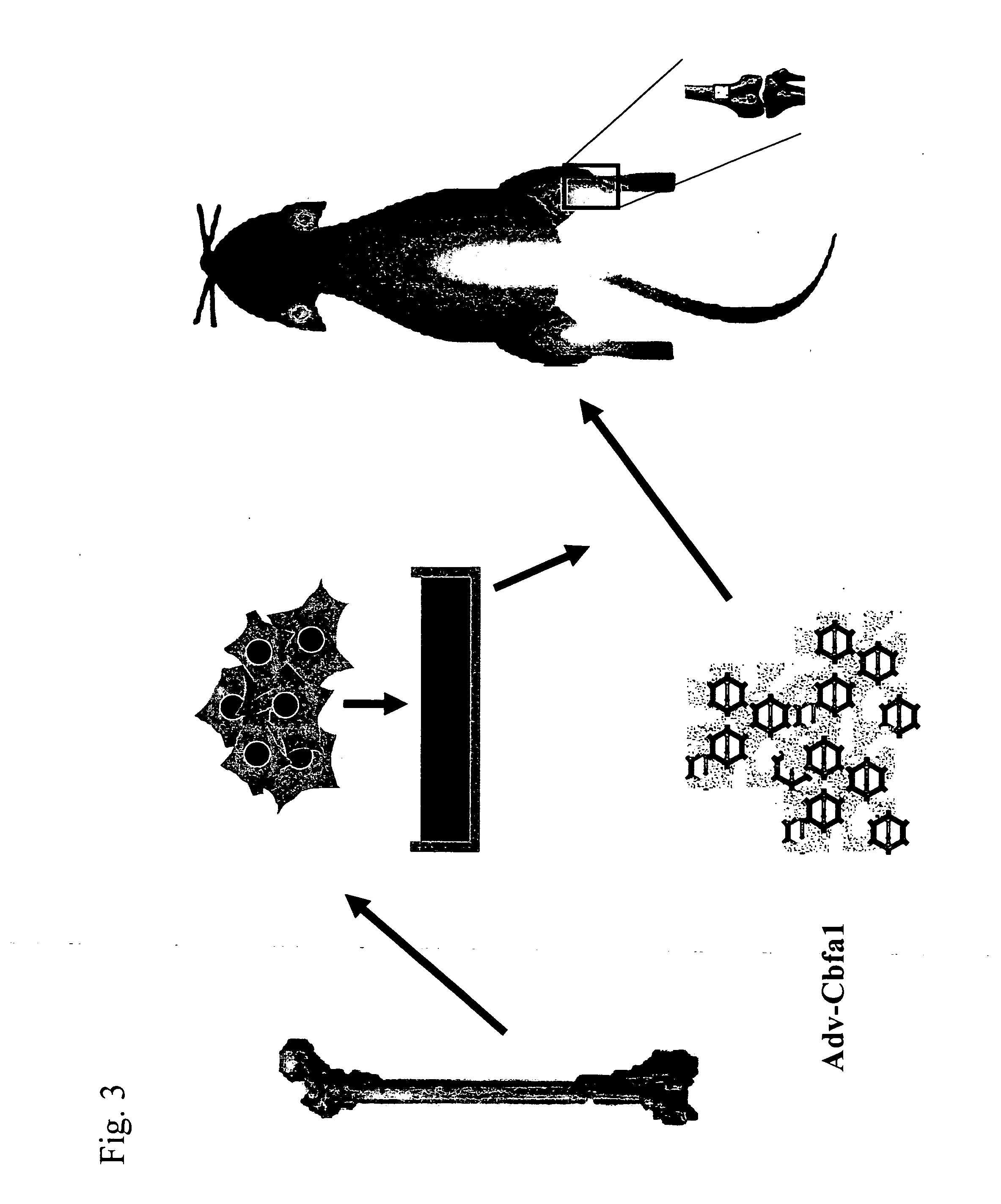Implant for regenerating bone or cartilage with the use of transcriptional factor
a transcription factor and bone/cartilage technology, applied in the field of implants, can solve the problems of inability to achieve bioadaptability as good as those of biological bones, heavy burden on patients, and limited amount of artificial implants, so as to achieve a simple and safer method of bone/cartilage regeneration
- Summary
- Abstract
- Description
- Claims
- Application Information
AI Technical Summary
Benefits of technology
Problems solved by technology
Method used
Image
Examples
example 1
Study of Sustained Release of a Viral Vector Utilizing Bioadaptable Material Carrier (1)
β-TCP block and HA Block
1. Preparation of Adenoviral Vector
[0041] cDNA was synthesized from the total RNA isolated from murine osteoblasts using AMV reverse transcriptase, and PCR was performed with the use of the resulting cDNA as a template and primers specific to Cbfa1 cDNA (GenBank Accession No. AF010284: SEQ ID NO: 1) to obtain Cbfa1 cDNA.
[0042] Sense primer: 5′-ATGCTTCATTCGCCTCACAAAC-3′ (SEQ ID NO: 2)
[0043] Antisense primer: 5′-TCTGTTTGGCGGCCATATTGA-3′ (SEQ ID NO: 3)
[0044] A large quantity of Cbfa1 cDNA was prepared via cloning into the TA cloning vector (pCR II-TOPO, Invitrogen). Cbfa1 cDNA was cleaved with the SpeI and EcoRV restriction enzymes, blunt-ended, and then inserted into the SwaI site of the pAxCALNLw cosmid vector with the use of the Adenovirus Cre / loxP kit (6151, Takara Shuzo Co., Ltd.) to prepare a recombinant adenoviral vector in accordance with the instructions of th...
example 2
Research Concerning Sustained Release of Virus Vector Using Bioadaptable Material as Carrier (2)
OPLA Composite
1. Preparation of Adenoviral Vector
[0059] cDNA was synthesized from the total RNA isolated from murine osteoblasts using AMV reverse transcriptase, PCR was performed with the use of the resulting cDNA as a template and primers specific to Cbfa1 cDNA, i.e., the sense primer: 5′-ATGCTTCATTCGCCTCACAAAC-3′ (SEQ ID NO: 2) and the antisense primer: 5′-TCTGTTTGGCGGCCATATTGA-3′ (SEQ ID NO: 3), to amplify Cbfa1 cDNA (GenBank Accession No. AF010284), and the sequence was determined via sequencing. A large quantity of Cbfa1 cDNA was prepared via cloning into the TA cloning vector (pCR II-TOPO, provided by Invitrogen). Cbfa1 cDNA was cleaved with the SpeI and EcoRV restriction enzymes and then blunt-ended.
[0060] Mouse VEGF cDNA (GenBank Accession Number NM—009505) was provided by Mr. Watanabe of the Tokyo Institute of Technology. A large quantity of VEGF cDNA was prepared, cleaved...
PUM
| Property | Measurement | Unit |
|---|---|---|
| porosity | aaaaa | aaaaa |
| diameter | aaaaa | aaaaa |
| pressure | aaaaa | aaaaa |
Abstract
Description
Claims
Application Information
 Login to View More
Login to View More - R&D
- Intellectual Property
- Life Sciences
- Materials
- Tech Scout
- Unparalleled Data Quality
- Higher Quality Content
- 60% Fewer Hallucinations
Browse by: Latest US Patents, China's latest patents, Technical Efficacy Thesaurus, Application Domain, Technology Topic, Popular Technical Reports.
© 2025 PatSnap. All rights reserved.Legal|Privacy policy|Modern Slavery Act Transparency Statement|Sitemap|About US| Contact US: help@patsnap.com



